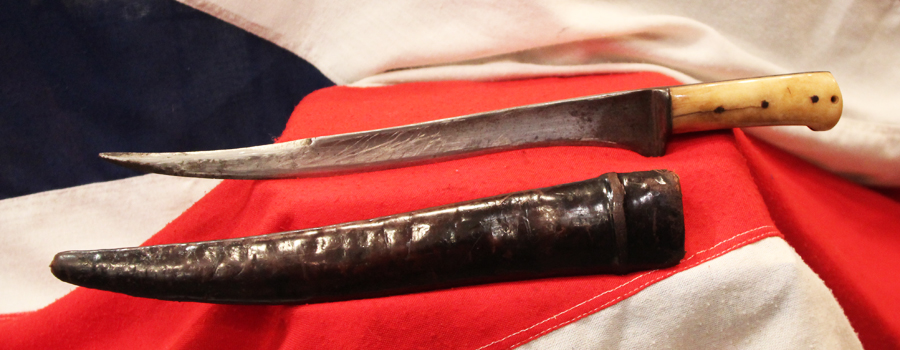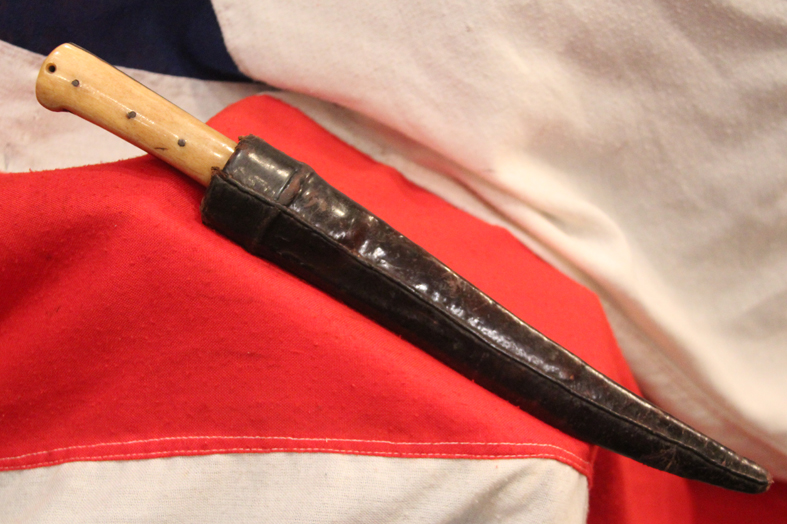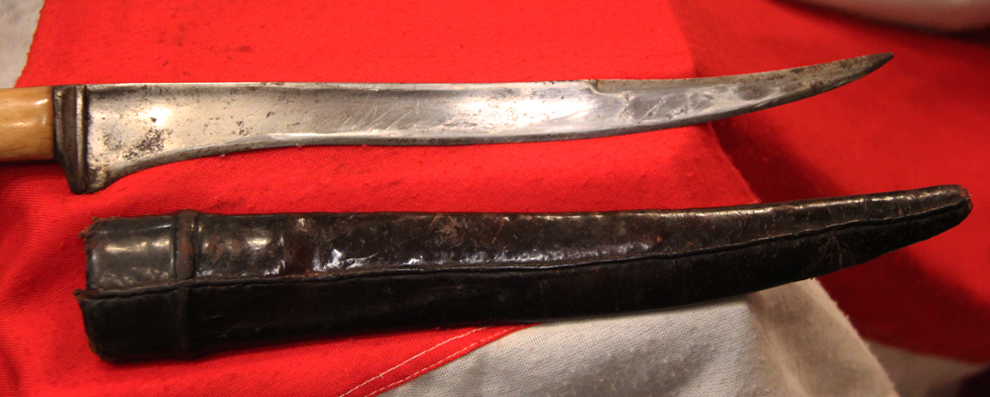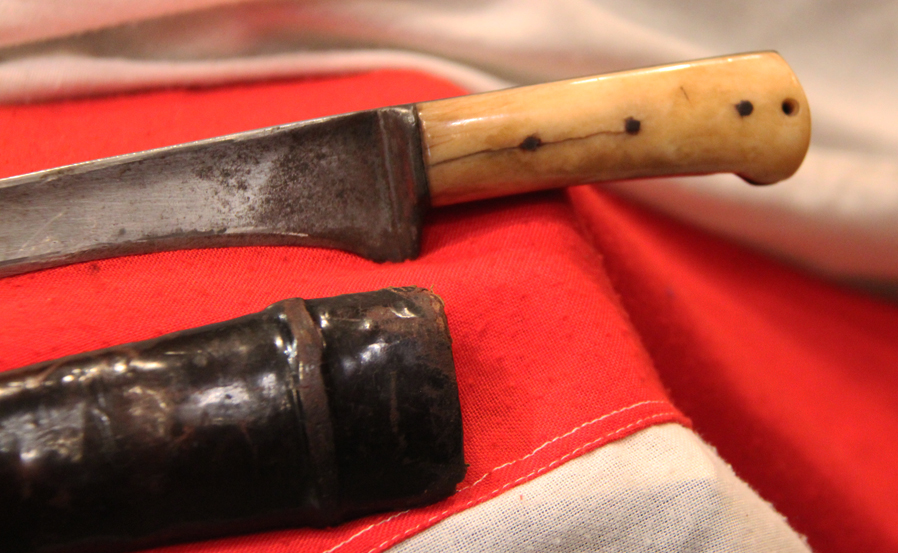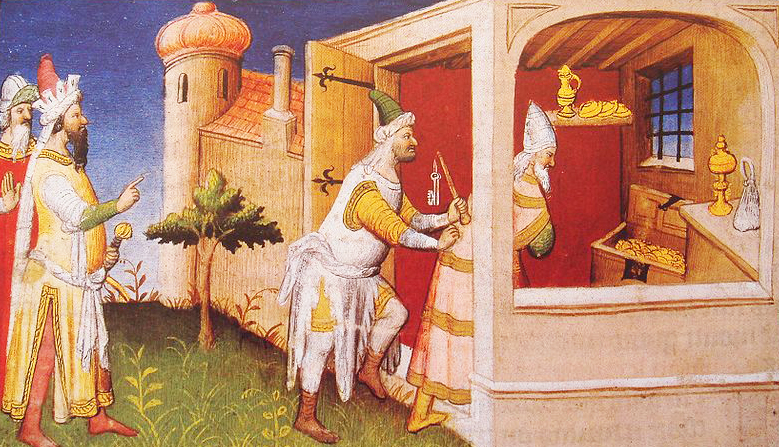A Fine Early 18th Century Pesh Kabz Dagger of the Fidai Hashashin. A Most Elegantly Shaped Blade
All pesh-kabz use a hollow-ground, tempered steel single-edged full-tang blade with a thick spine bearing a "T" cross-section for strength and rigidity, but the unusual recurved nature of this blade’s form makes it highly distinctive and extremely attractive.
A pair of bone handle scales that are fixed to the full-tang grip by four hand made rivets, which features a hooked butt. The earliest form of this knife, featuring the recurved blade, is highly suggestive of its Persian origins The blade is broad at the hilt, and tapers progressively and radically to a needle-like, triangular tip. An early version of this knife that is a most likely candidate for being used by an 18th century incarnation of a Fidai Hashashin because upon striking a coat of mail, the reinforced tip spreads the chain link apart, enabling the rest of the blade to penetrate armour. The knife is typically used as a thrusting weapon. However, the wide hollow-ground blade also possesses considerable slicing performance, and as such may also be used effectively with slashing or cutting strokes. Its ability to be used as either a cutting or thrusting weapon has caused more than one authority to erroneously classify the pesh-kabz as simply just a fighting dagger. Ismailis killers of the Assassin Order were termed to be Fidais or Assassins. The word 'Fidai' is derived from 'Fida' meaning sacrifice. Because Ismailis used to sacrifice, i.e. give away their lives and everything for the order, they are termed as 'Fidais'. But as far as the word 'Assassin' is concerned there is a controversy. Some say it is derived from the word 'Hasaneen' meaning followers of 'Hasan'. Some say that the word actually was 'Hashish' meaning addict of a green intoxicating herb 'Hashish'. This assumption is founded on their belief that at the time of war, or during initiations, Hasan used to drug them with 'Hashish' to keep up the spirit of his soldiers. The Fida'I are said to be adept in an early form of furusiyya, or the Islamic warrior code. In the case of the Assassins, they were trained in combat, disguises, and most likely horseback riding.
Common disguises used by the Fida'I were the guises of a Christian monk, Sufi dervish, Muslim fakir (ascetic), traveling merchant, school teacher or soldier.
A Fida'is using the guise of a Christian monk they killed Conrad of Montferrat and Ibn al-Kashshab. Using the guise of a Sufi they killed Il-Bursuqi of Mosul. The Assassins that attempted to kill Saladin were disguised as soldiers.
The Fida'I would often fully commit to his guise. The Assassins that killed Conrad of Montferrat whilst disguised as monks were allegedly baptized and lived in a monastery. According to one account, one of the two Fida'is was able to flee to a church after attacking Conrad and due to his robes, blended in. According to the same account, he was caught and "seized and dragged until he was dead".
Codes of conduct are followed, and the Assassins are taught in the art of war, language, and strategies. The training possibly included certain games like chess. Archery and sword fighting were also included in their training.
As an ethical code, it is comparable to the contemporary European notion of chivalry. Furussiya and European chivalry has both influenced each other as a means of a warrior code for the Saracen, knight and Fida'i.
This art was practiced throughout the Muslim world, and saw its greatest achievement in Mamluk Egypt during the 14th century. 11.25 inch blade 15.5 inches long overall
Code: 21803

